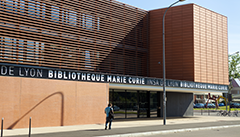
Sciences & Société
Soutenance de thèse : Xuan Viet Linh NGUYEN
Investigation of Ambient Radio-Frequency Energy Harvesting using a Rapid Prototyping Plastronic Approach
Doctorant : Xuan Viet Linh NGUYEN
Laboratoire INSA : Ampère
Ecole doctorale : ED160 : Electronique, Electrotechnique, Automatique
A barrier to overcome of Internet of Things (IoT) devices is their autonomic energy supply scheme and Radio Frequency Energy Harvester (RFEH) is selected among recent energy harvester mechanisms (thermal, mechanical, light, etc.). Another interesting aspect is the possibility of integrating the RFEH onto the surface of polymeric objects. This seems impossible with PCB and FLEX-PCB, but possible with Plastronics. Therefore, the objective is to demonstrate the feasibility of RFEH with Plastronics technology developed in our laboratory, suitable for prototyping. This technology, called Rapid Plastronics, is based on fabricating substrates using Stereolithography (SLA), and realizing the conductive traces applying Electroless Deposition (ELD). The objective was not to develop this technology, but to apply it in the RFEH context.
This thesis is conducted in the following phases.
In the first phase, the studies of materials manufacturing process (Stereolithography (SLA) substrate, ELD copper) in Rapid Plastronics, relative permittivity, loss tangent of the substrate, and resistivity of the conductor are carried out.
In the second phase, designs of patch antenna for the energy harvesting (EH) applications are discussed. A fundamental linearly polarized patch antenna operating at 2.45 GHz is studied, and the impacts of the SLA substrate and the ELD copper on the antenna’s performance are mentioned. Then, the circularly polarized patch antennas being able to capture all the polarizations are studied. The third phase is about the RF-DC rectifiers, the proposed Power Management Unit (PMU), and the electrical interconnection between the designed antennas, the rectifiers and the PMU. Moreover, identifying the optimal load of the rectifier that offers a vision of setting up the impedance interference between the designed rectifier and the PMU will be also introduced.
In the last phase, the performance of the assembling of the PMU, the rectifiers and the antennas will be analyzed.
Informations complémentaires
-
Amphithéâtre Emilie du Châtelet (Bibliothèque Marie Curie) - Villeurbanne

